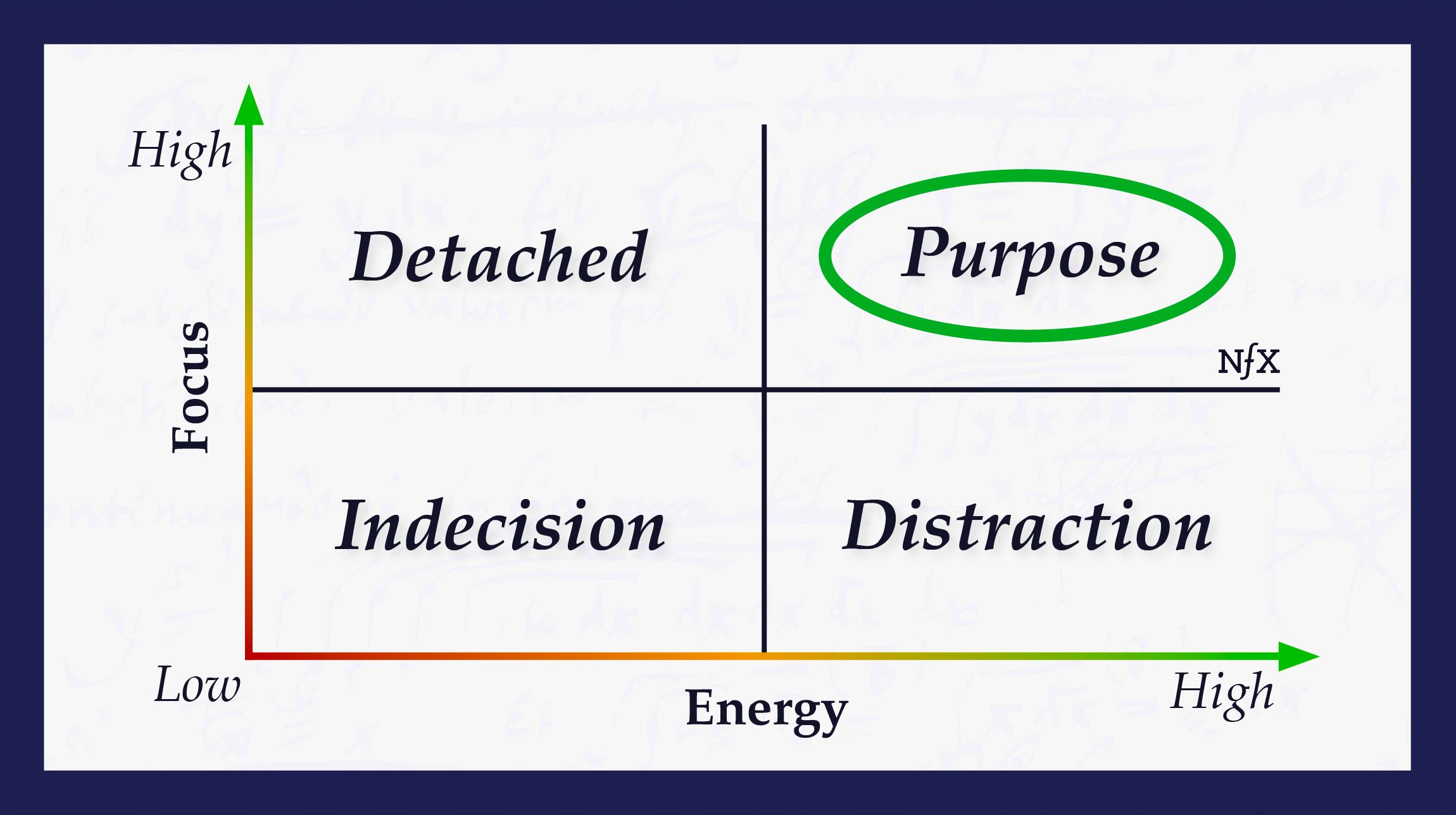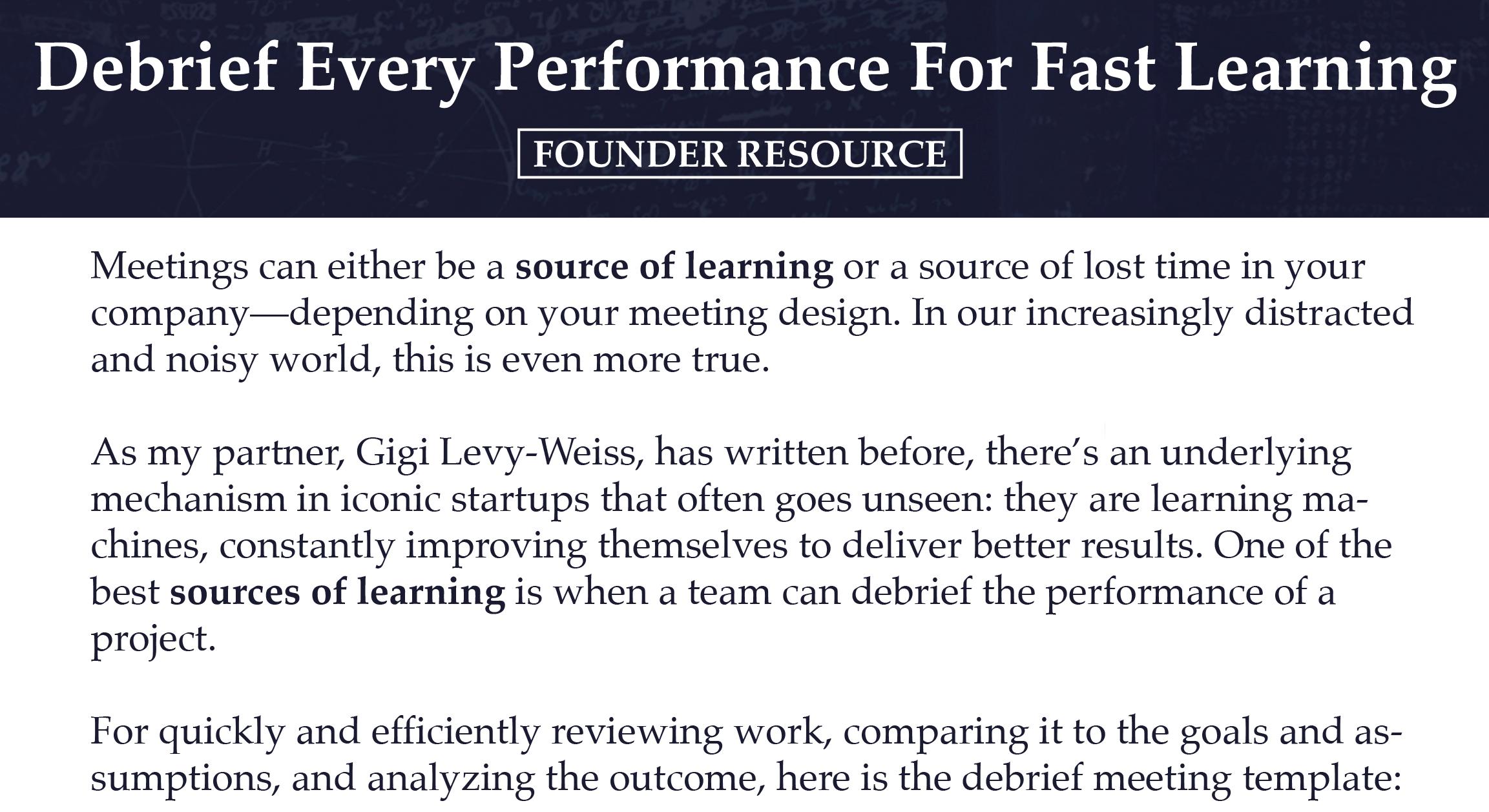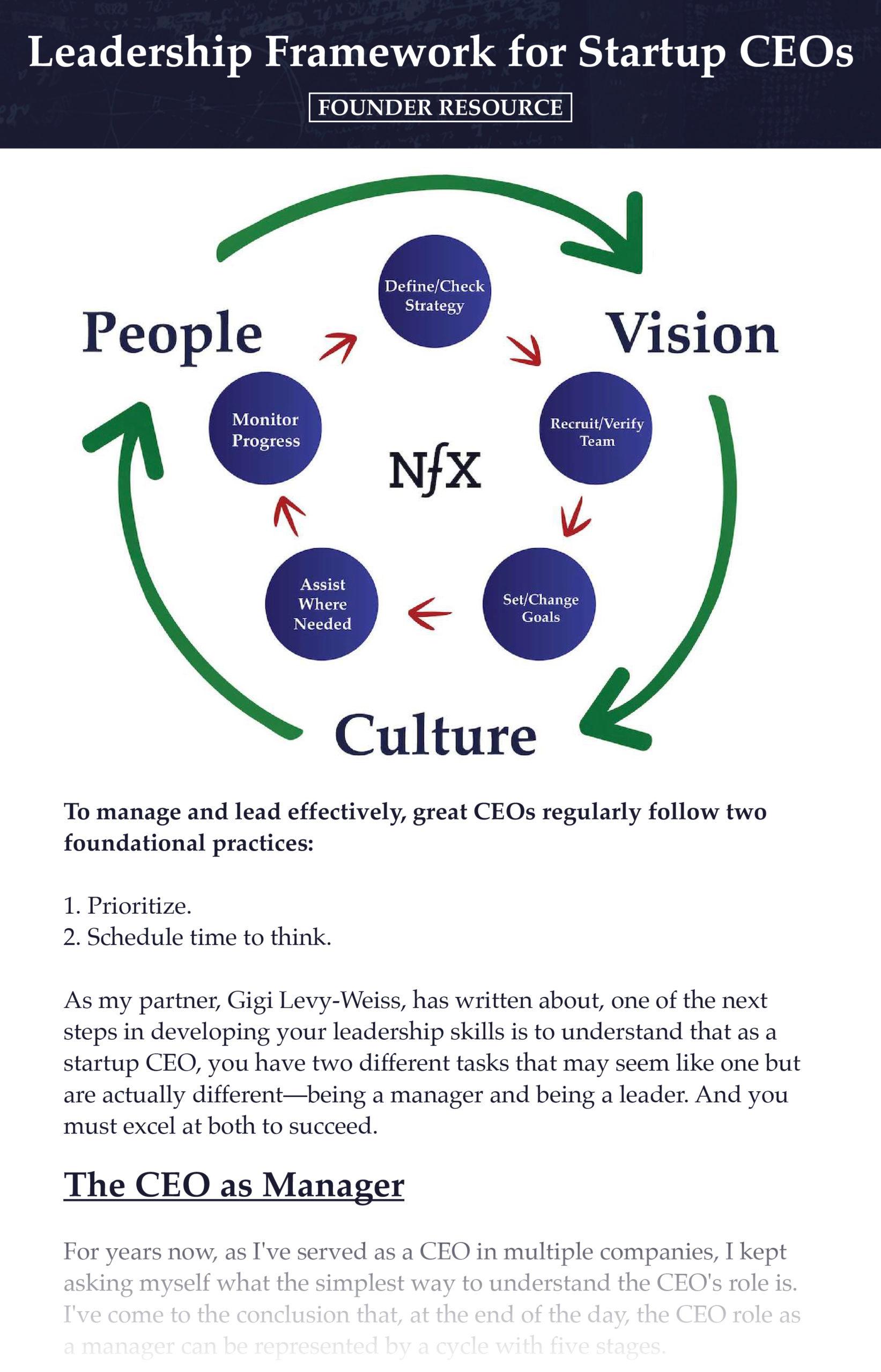

The opposite of traction is distraction. Top Founders have an inverse response to distraction. As the world gets more distracting for others, they get focused and gain traction.
Teams who engineer focus into their culture have a rare advantage. They know that focus is a set of mindsets and habits — a psychological toolkit — that cuts through uncertainty, ambiguity, fear, and distraction.
As we wrote at the beginning of the pandemic, one of the three key elements to surviving difficult times is managing psychology for you and your team.
In my recent NFX podcast conversation with bestselling author of Hooked and Indistractable, Nir Eyal, we break down what the best teams are doing right now to focus.
We’ve organized some of Nir’s insights from our podcast conversation, below, for the benefit of focused Founders everywhere. Visit nirandfar.com for more.
The Opposite Of Distraction Is Not Focus
We have to start by understanding what is distraction. What do we mean by that word?
- The best way to understand what distraction is, is to understand what distraction is not. So what is the opposite of distraction? Most people say the opposite of distraction is focus, but it’s not. The opposite of distraction, if you look at the origin of the word is traction. Both words come from the same Latin root trahere which means to pull.
- Traction by definition is any action that pulls you towards what you say you’re going to do, things that pull you towards your values, help you become the kind of person you want to become—that’s traction.
- The opposite of traction is distraction. Distraction is any action that pulls you away from what you intended to do, away from your values, away from becoming the kind of person you want to become.
- So why is this important? Because any action can be traction or distraction.
The distraction that tricks you into prioritizing the urgent rather than the important, that is the most pernicious form of distraction.
- I would say to myself. “Well, email is something I have to do. Isn’t that part of my job?” Yeah, I guess it is. But I would use those things that I wanted to do, or didn’t hate doing as much as opposed to doing the things I said I had to do, like work on that difficult proposal or the project I kept procrastinating on. So any action can become a distraction if it’s not what you plan to do with your time. And conversely, any action could be traction if that’s what you plan to do.
- So now we have traction and we have distraction. You can think of it like a number line pointing to the right and to the left. Now, what prompts us to take these actions?
- We have external triggers and internal triggers. External triggers, anything in our outside environment that leads us towards traction or distraction can serve us if they are helping us do what we said we were going to do.
- Earlier, I got an alarm on my phone that said, “Hey, it’s time to talk to James, we’re going to have this conversation.” Great. That’s what I planned to do. That external trigger was serving me.
As another class of distractions, meetings are also pernicious. They are often urgent (you can’t miss them, at least) but they are not always important. To control for this, you can bring intention and purpose to your meetings. Below is a template that you can use to ensure you are learning something in every meeting.


“Distraction Begins From Within”
One of my big revelations when writing Indistractable and over the five years of research is that the external triggers are not the leading cause of distraction. The number one cause of distraction is not what is happening outside of us, but rather distraction begins from within.
It’s all about those internal triggers. That is the source of the vast majority of our distraction, boredom, uncertainty, fatigue, loneliness, anxiety, stress. We seek escape from that discomfort.
- With all of the products we use, online or offline, the only reason we use any product, the only reason we do anything in life is to escape discomfort. This is called the homeostatic response.
- A product’s use can attach to an uncomfortable sensation, whatever that might be. Maybe you’re feeling lonely, check Instagram or Facebook. You’re feeling uncertain, Google it. You’re bored, there are lots of solutions for boredom. Check the news, stock prices, sports scores, Pinterest, Reddit.
- When a product attaches to that feeling, that’s where the habit is cemented.
4 Steps To Becoming Indistratable
- The first step to becoming indistractable is doing what I call mastering the internal triggers, having a system in place so that you don’t need to expend a lot of willpower. You don’t need a lot of self-control. You have a methodology for dealing with those uncomfortable states so that you can put them in their place. So that’s step number one, is mastering the internal triggers.
- Step number two is to make time for traction. The vast majority of people don’t keep any sort of a calendar. Maybe they keep a to-do list, which as I’ll explain later, is one of the worst things you can do for your personal productivity. It’s critical that we make time for traction in our day.
- The third step is to hack back the external triggers. If we know that these technologies are hacking our attention, clearly they are. All media hacks our attention. Why can’t we hack back? Of course, we can hack back.
- Finally, the last step is to prevent distraction with pacts. This is where we have a firewall against distraction. The last line of defense is we can make what we call a pre-commitment device. We can use one of these pre-commitment devices to help us stay on track when we say we will.
It’s really about using these four steps in concert: master internal triggers, make time for traction, hack back external triggers, and prevent distraction with pacts. That’s how we become indistractable.
Distraction Is Not A New Problem
Plato, the Greek philosopher 2,500 years ago, talked about akrasia, the tendency to do things against our better interest. This is not something that the iPhone and Facebook invented in our lives.
- We have always been easily distracted. And so we have to go back to the root causes of why we get distracted.
- The benefit of this methodology is that you will live your life according to what you say is important to you. That whatever your values are and whatever you want to do with your time. If you want to play video games, wonderful. If you want to do crossword puzzles, no problem.
- I’m not one of those people who says, “Oh, video games are morally inferior to watching football or Fox News on TV.” No, anything you want to do with your time is fine. What I want to help people do is to live their life and spend their time with intent, according to their values.
There are lots of techniques and tips and tricks and life hacks that are effective. But the reason that most of them fail is because you’re not looking at the root cause of the problem.
- I think that a good metaphor here is with food. So I used to be clinically obese, now at 42, I’m in the best shape of my life. And what changed in my life is that, I stopped blaming and shaming and people do this with technology distraction all the time.
- The blamers they say, “Oh, it’s the Internet doing it to me. It’s the modern world doing it to me.” It’s all this bad stuff outside of me that’s at fault.
- The blamers, that’s feudal, because you’re not going to travel into some time machine and go back to an age before distraction. There was never such an age. These technologies and distractions are not going away. Being a blamer is feudal.
- The other side of the spectrum is the shamers. And this is what I used to do. I would shame myself. I would say, “Oh, I’m getting distracted, I’m such a distractable person. I have an addictive personality. I must have a short attention span. There must be something wrong with me. I need to go get a diagnosis.” I would shame myself into thinking that somehow I was broken.
- And of course, that’s not helpful either because distraction is not a character flaw. There’s nothing wrong with you. It’s simply that you don’t have the skills to deal with these distractions in a healthier manner.
- What we have to do when it comes to time management is to learn how to deal with that discomfort. Just like I had to learn that the reason I was overeating and I was clinically obese wasn’t because food was delicious. Food is made to be delicious. Technology is designed to be engaging. It was my response to those urges.
- What we have to do instead is to learn that we are looking for an escape. The reason we are overdoing these things is because we are looking for that emotional relief. And so the way I lost weight was to really think about why I was overeating? Well, it was because I was eating when I was bored. I was eating when I was lonely. I was eating because I felt ashamed about how much I had eaten. This is why I’m so anti ‘tech is bad, stop using tech.’ It does nothing but shame people just like we shame people for overeating without understanding the deeper reasons why.
Nobody Is Thinking. That’s Why It’s Your Secret Advantage.
I’ve been a Founder twice now. It’s a very, very difficult job. And what I always tell folks that I consider investing in their company or when I’m just speaking with different startup Founders, I say that the CEO’s only job is to prioritize. That’s really all you do. You just are a professional prioritizer, everything else is detail.
- The problem is that the vast majority of people who want to be startup Founders, they make no time in their day for their key responsibility. They are so busy doing what we call reactive work.
- There are two types of work. We have reactive work and reflective work. Reactive work is reacting to the emails, reacting to the Slack notifications, reacting to the phone calls and many people are very comfortable doing that all day because they think it is hard work.
- Reflecting requires the brain. We don’t like to spend energy thinking, so many people don’t do it.
- If you want a huge competitive advantage in the startup ecosystem, here’s the magic formula. Make time to think in your day, because you cannot do the planning, the strategic thinking, the prioritizing, if you are constantly distracted.
- This goes back to step two of how to become indistractable, making time for traction in your day. Even if it’s 30 minutes, 45 minutes, an hour, if you can book that time in your day to spend time thinking, you will be doing something that almost nobody else in your industry is doing. I guarantee it. Nobody is thinking in your industry. The odds are they’re not making that time to think.


Turn Your Values Into Time
In my interviews with folks who are indistractable, I learned that they all use this timeboxing technique rather than the to-do list technique.
- The timeboxing technique has been shown in 1,000s of peer-reviewed studies to be very effective. But it’s about how we schedule that time. Are you constantly going from one meeting to the next, to the next and not actually doing work? Are you doing hard thinking?
- Engineers, their entire day almost needs to be spent doing reflective work. The number one cause of bugs in a program are interruptions, distractions that take you out of that concentration mode. So an engineer is probably spending the vast majority of their day with that reflective work time that you can only do without distraction.
- Timeboxing uses a technique that psychologists call making an implementation intention, which is a fancy way of saying planning out what you’re going to do and when you’re going to do it.
- That’s planning out your entire day, according to your values. This is what I call turning your values into time. I walk people through how to make sure that you can live out your values by first understanding. Well, what are values? Values are attributes of the person you want to become. And so what we have to ask ourselves is how would the person I want to become spend their time?
- Many of us talk a good game. We say, “Oh, what are your values? Oh, I value my health. I value my relationships. I value my family.” But do you have that time in your schedule or is it something that you give the scraps and leftovers of your time to those things that you say you profess that you value?
- It’s really about being intentional about how you want to spend you time, including the fun stuff. If you want to spend time playing video games, then put that time in your schedule so that you know it’s coming.
Do a Schedule Sync
Timeboxing has been around for a very long time. I didn’t invent it. But what I try to push forward is this idea of doing a schedule sync. I think this is something that startup Founders will really appreciate.
- One of the big problems that people have is that employees and managers have very little understanding about how they are spending their time. And this causes a lot of problems because when we use this to-do list methodology of, “Well, here’s my list of things. Here’s my backlog. Here are all the things I’m going to do.” Whether it’s a to-do list or on a Kanban or whatever. We just throw it over the wall and say, “Hey, do all this stuff.” And we have no conception of how long that stuff takes.
- This is part of why the to-do list is so horrible. And it’s not that keeping a list of the things you have to get done is a bad thing. It’s running your life on a to-do list. If you wake up in the morning and look at your to-do list rather than your schedule, you’re doing it wrong.
- Because what you will do when you look at the to-do list is you’ll do the easy stuff. You’ll do the fun stuff. You won’t do the important, hard stuff.
- What I recommend doing is when you make a timebox calendar, basically what you’re going to do is make time for all the things that are important to you in your day. Take care of yourself, take care of your relationships, and of course, take care of your work.
- And then you’re going to sit down with your manager and you’re going to show your boss, here’s how I’m going to spend my workday.
- You do this once a week on Monday mornings, it takes 10 to 15 minutes. It takes almost no time and it will change your life. You’re going to show that schedule to your manager. You’re going to show them how you’re going to spend that time.
- You can say, “Look, here’s how I’m spending my time this week. Now you see this other piece of paper over here, you see this other list? These are all the things that I didn’t know where to put into my schedule. Can you help me reprioritize those things?” And invariably, every time you sit down and do this schedule sync, you will find that there is some misappropriation of time.
- So what you can do is say, “Oh, you know what? That task that’s on your calendar or that meeting. Actually, that’s much less important than that thing you didn’t put in your calendar. Let’s flip flop those around.”
- The reason managers love this is that now they have exposure into, “Hey, how are you spending your time exactly?” And employees love it because they know they’re working on the right stuff as opposed to getting a surprise later on that all that time you spent working on that task, it was actually much less important than this other task. That’s what schedule syncing is all about.
We Need More Technologists
Our species always does the same thing when confronted with a new technology. As Paul Virilio said: “When you invent the ship, you invent the shipwreck.” So what did we do? Did we stop sailing ships? How come we don’t hear about shipwrecks today? We made ships better. And so that’s exactly what we always do. We adapt.
Being an industry insider, I know all the tips and tricks that Facebook, etc use to get you hooked. And so I can tell you from an insider’s perspective, how do we make sure that these technologies are something that serve us as opposed to us serving them?
This is what Indistractable is all about, asking ourselves, “Why would we wait? Why would we wait for Facebook and Google to fix this for us? Why would we wait for the geniuses in Washington to do something about the problem? Why would we not get started right now to see what we can do ourselves?”
- Tech critics telling us that technology is hijacking our brains, that it’s addicting everyone. Rubbish. It’s BS. There’s nothing wrong with going on Facebook. It’s not mind control.
- As much as people hear about how these technologies are addicting you or manipulating us, this is hyperbole. The solution, the antidote to this stuff is actually not that tough. We really can put these distractions in their place if we know how.
- My first book, Hooked, was about building good habits in people’s lives primarily through technology. And my second book, Indistractable, is about breaking your bad habits as a user.
- I’ve developed frameworks to help you manage distractions but it starts with you recognizing that you are in control of your attention. We are much more powerful than these technologies.
- Can we complain that technology is addicting us, is hijacking our brain when we haven’t even taken five minutes to turn off the notifications that we’re constantly getting from these apps? Of course, we’re more powerful. There’s nothing Zuckerberg can do to reach back in your phone and turn on notifications.
- Another thing we can do is adopt new technologies to fix the last generation of technologies. I think what scares me is that when I moved to Silicon Valley back in 2006, skepticism was a Silicon Valley value. That was a good thing to be skeptical. Now it’s cynicism. Now there’s nothing that technology can do right, it’s all evil. It’s all mind manipulation. It’s all election meddling. And there are clearly problems that we need to fix.
- But the solution is to fix these problems with more people getting into our field, more people improving the problems with the last generation of technology.
- We can make the ships better, so to speak, so that there are less shipwrecks. This is exactly what we need. We need more people to get into this field. We need more technologists.
You can listen to the NFX podcast conversation with Nir Eyal here. And subscribe here.
As Founders ourselves, we respect your time. That’s why we built BriefLink, a new software tool that minimizes the upfront time of getting the VC meeting. Simply tell us about your company in 9 easy questions, and you’ll hear from us if it’s a fit.
Try ChatNFX
